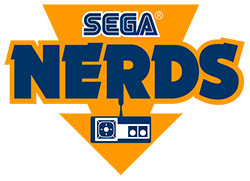
How Can Brands Learn from the Sonic Redesign Incident?
One of the most striking events to happen to the world of Sega in recent years was when the Sonic film was postponed so they could redesign the lead character. The redesign came after a still was leaked online – and received huge backlash. Luckily for long-time fans, Sega got to work on fixing the issue that resulted in a live-action version of the hedgehog worthy of the screen time. But what does the event tell us about how important it is for a long-term brand, especially one like Sonic the Hedgehog, to keep the trust among its audience?
Protect Brand Image
Protecting the brand image is one of the most important duties for long-term franchises. Occasionally, recognisable characters or brands are used in malvertising, which can erode the general public’s trust in a brand or franchise. Brands must ensure that any fake ads that feature their likenesses are dealt with swiftly.
A malvertisement refers to a fake ad that appears on a publisher’s page that blends in with the genuine ads. The worst aspect is that malware can be distributed without the user ever clicking on anything or interacting with the ad – and can be disguised to look like something recognisable. Bad ads can result in malicious code being deposited on the device, which can be used as ransomware and for cybercrime.
Malware creators often use likenesses to blend in with their pop-ups. On related sites, visitors could be confused as to whether the ad is genuine, especially if it displays such a likeness. So, it’s crucial that the brand image is strenuously protected. British money expert Martin Lewis found out the hard way how important this was, when his face was used on malicious advertising that had convinced many to part with their money due to their trust in his expertise.
Listen to Fans
While there are variants on the reports, it seems clear that Sega listened to fan backlash over the Sonic design. Some fans will have followed the character since its inception in 1991, so will feel protective of it. As the fans of a series make up its customer base, it’s important for them to be listened to.
McDonalds to roll out alternative to plastic straws in thousands of US restaurants https://t.co/0BIQLB2xWc pic.twitter.com/og3rZPcb2e
— The Hill (@thehill) June 16, 2018
For example, pressure from customers urged McDonald’s to swap from plastic straws to paper ones, while, in 2017, a Tesla car user tweeted Elon Musk about an issue with steering and Musk replied, promising to fix it with the next update. In an interconnected world, with brands active on social media, there is little excuse to not listen to what their customers and fans are saying. Sonic has proven that no matter how big the task, listening to fans could be beneficial.
Moreover, listening to fans helps strengthen the bond between the audiences and the company. For those who have followed Sonic from the beginning, to be listened to by a major company and have suggestions enacted could reinforce why they chose that brand to be loyal to in the first place. Loyalty in business goes both ways. While fans are encouraged to be loyal to brands, the brands have to show gratitude back to their customers.
For younger audiences and newer fans, the Sonic redesign may be one of the most standout things they know about Sega. But it puts the company in a positive place. Other brands and franchises can learn how important it is to protect the brand image from potential threats and how important it is to actually listen to fans.






